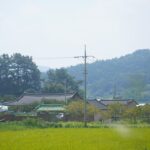Tucked away in the maze-like backstreets of Kyoto, a renaissance is quietly taking place within the city’s enduring sento—Japan’s communal public baths. Far from the crowds of tourists flocking to famous temples, these sento offer an authentic immersion into local life, Kyoto’s artistic soul, and centuries-old bathing culture. Whether you’re a wellness enthusiast, a cultural explorer, or a design lover chasing Japan’s secret gems, follow us into Nishijin’s alleys to discover hidden art sento, interact with Kyotoites, and enjoy deep, restorative experiences off the beaten path.
What Is a Sento? Exploring Kyoto’s Traditional Public Bath Culture
Sento, or public bathhouses, have been an essential part of Japanese daily life for centuries. Especially before the rise of private bathrooms, sento served as communal spaces where neighbors gathered to unwind, socialize, and cleanse body and mind. In Kyoto, many original sento date back to the Taisho and Showa eras—boasting vintage architecture, ornate facades, and a timeless atmosphere.
In recent years, however, sento faced the threat of extinction as modern homes reduced demand. But Kyoto’s sento are now witnessing a revival among both locals and young creatives. Sento have begun reinventing themselves—not only as places to bathe, but as vibrant cultural hubs hosting art, music, and community events. This “artisanal sento” trend is breathing new life into a cherished tradition, making it a compelling destination for deep local experiences.
Hidden Art Sento: Kyoto’s Locally-Loved Bathhouse Treasures
Among Kyoto’s many sento, some stand out as living works of art. Funaoka Onsen, operating since 1923 in Nishijin, is an architectural jewel. Its wooden entryway evokes a classic machiya townhouse, while its interior dazzles with hand-carved panels, tile murals, and stained glass. You’ll soak in deep tubs while admiring intricate dragons and Mount Fuji scenes—immersed in both hot water and tangible history.
Nishijin’s Kinyu (Nishijin Sento) is another local favorite. While modest from the outside, inside you’ll find quirky mosaics, retro signage, and even contemporary street art commissioned from local artists. Many sento owners are passionate preservationists, balancing tradition and creativity so that every visit is a new discovery.
Don’t miss the chance to chat with the bathhouse staff—often the keepers of untold stories and neighborhood lore. Their friendliness and local pride make these sento feel like home, even to first-time foreign visitors.
Beyond Bathing: Community Events, Art, and Authentic Kyoto Connections
Kyoto’s art sento are reinventing themselves as creative hubs at the community’s heart. Look out for art exhibitions on sento walls, live jazz nights, or special themed bathing evenings. Some sento even collaborate with local artisans on workshops ranging from indigo dyeing to pottery sessions, all held within the atmospheric bathhouse grounds.
For visitors, these events offer a rare window into local life—you might find yourself chatting with neighborhood regulars, joining a sake tasting, or learning about traditional crafts from Kyoto’s creative minds. These sento aren’t just for cleansing the body; they nurture bonds and creativity, too.
Stay tuned to sento social media or community bulletin boards for pop-up happenings. Even on regular days, the communal atmosphere invites spontaneous interaction: striking up a conversation in the dressing room often leads you to discover the city’s best-kept secrets and new friends.
Hidden Bathhouse Walks: Nishijin’s Secret Alleyway Sento Trail
The Nishijin district is famed for its centuries-old textile industry, yet its winding alleys also hide sento gems waiting to be discovered on foot. Start your walk from Funaoka Onsen, then meander southwards along narrow streets lined with kimono ateliers, quiet shrines, and traditional homes. Along the way, watch out for the nostalgic tiled chimneys—silent signposts of a neighborhood sento.
Other standouts include Sakura-yu, beloved for its homey vibe and friendly seniors, and Kura-no-Yu, a bathhouse built in a converted kura (storehouse) with unique architectural features. Each sento welcomes visitors with its own personality—some vibrant and lively, others soothingly peaceful.
To soak up the full Nishijin experience, combine your sento visits with a stop at a local café or a workshop for hand-weaving your own textile souvenir. This curated alleyway trail delivers a tapestry of Kyoto’s heritage, artistry, and hospitality—far away from tourist crowds.
Tips for Sento First-Timers: Bath Etiquette & Kyoto’s Local Eats
If you are new to Japanese public baths, don’t worry—local sento are friendly and welcoming. Here are a few tips for first-timers:
- Bring a small towel and your own soap (some sento provide rentals/amenities, but having your own is typical).
- Wash thoroughly before entering the bath—cleanliness is a must.
- Swimwear is not allowed; everyone bathes nude, but privacy is respected.
- Don’t put towels in the bath water; leave them on your head or by the edge.
- Stay hydrated, and don’t hesitate to ask staff or regulars for advice—they’re happy to help!
After your soak, treat yourself to Kyoto street food nearby: crispy yakitori skewers, steaming nikuman buns, or the ever-popular matcha sweets. Local izakaya bars around Nishijin welcome bath-goers for post-bath drinks and casual conversation, extending the sento’s communal spirit into the night.
Kyoto’s hidden art sento are more than just places to bathe—they’re ever-evolving windows into Japan’s living traditions, creativity, and heartfelt connections. Next time you’re in the city, skip the guidebook’s top 10 and discover Kyoto the way locals do: from the tranquil steam of a neighborhood sento.







